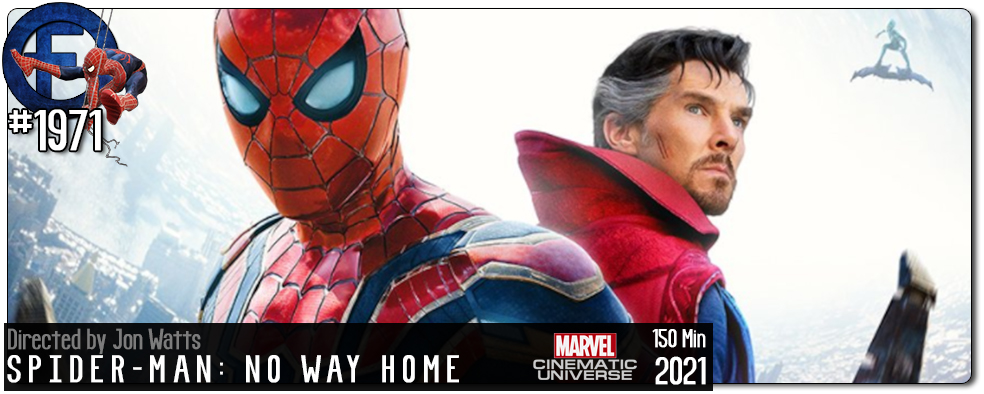Movie Review – Spider-Man: No Way Home
Principal Cast : Tom Holland, Zendaya, Benedict Cumberbatch, Jacob Batalon, Jon Favreau, Benedict Wong, Marisa Tomei, Jamie Foxx, Alfred Molina, Willem Dafoe, Thomas Haden-Church, Rhys Ifans, JK Simmons, JB Smoove, Tony Revolori, Angourie Rice, Charlie Cox, Andrew Garfield, Tobey Macguire.
Synopsis: With Spider-Man’s identity now revealed, Peter asks Doctor Strange for help. When a spell goes wrong, dangerous foes from other worlds start to appear, forcing Peter to discover what it truly means to be Spider-Man.
********
Warning: Heavy spoilers ahead. Do not read on unless you have seen No Way Home!
If you’re a comic book geek you could hardly go three paces without bumping into a Spider-Man fan. Hell, I was never a Marvel reader and yet Spider-Man has always been on my top five comic book character list, alongside Superman and Batman. Marvel Studios, co-producing this, the third (and final) instalment of the self-titled Spider-Man franchise films under the direction of Jon Watts, following both Homecoming and Far From Home, tapped into a well of geek euphoria when it was revealed over the preceding year or so of production that No Way Home would see the return of a couple of old faces: namely Alfred Molina and Jamie Foxx, who had played Doctor Otto Octavius and Electro respectively in both Spider-Man 2 and The Amazing Spider-Man 2, alongside previous Spider-Man stars Tobey Maguire and Andrew Garfield. Their casting led fans to speculate that both Macguire and Garfield would reprise their roles as their various Peter Parkers with the incumbent Tom Holland, as the ruinous effects of opening the multiverse (alluded to in Wandavision and specifically introduced in Loki, both Disney+ series) began to be felt across the MCU. The marketing for No Way Home also gave us glimpses of a returning Willem Dafoe as Green Goblin – introduced way back in Sam Raimi’s 2000 Spider-Man, as well as Thomas Hayden-Church’s Sandman from Spider-Man 3 and Rhys Ifans’ Lizard from The Amazing Spider-Man. With Sony (who co-produced alongside Marvel) hoping to develop their own Spider-verse (which includes the Venom franchise and the Jared Leto-led Morbius, to say nothing of the animated Into The Spider-verse juggernaut) it made sense that past franchise stalwarts would make a return in a multiversal cataclysm – the only question was, and still remains: would Tobey and Andrew follow suit, and again suit-up to play the world-famous webslinging wallcrawler?
This synopsis reveals heavy spoilers from Spider-Man: No Way Home. You have been warned.
At the conclusion of Far From Home, Peter Parker’s identity as Spider-Man was revealed by Daily Bugle owner J Jonah Jameson on a Times Square megascreen. With his friends MJ (Zendaya) and Ned (Jacob Batalon) besieged by instant (and unwanted) fame, and Aunt May (Marisa Tomei) and Happy Hogan (Jon Favreau) trying to keep his home life normal, Peter endeavours to obtain help from a former Avengers ally, Doctor Stephen Strange (Benedict Cumberbatch). Strange casts a spell hoping to wipe the memory of Peter Parker from most of the universe, however when Peter interferes things go horribly wrong, and villains from alternate universes start to appear in New York. Notably, Doctor Otto Octavius (Alfred Molina), Norman Osborn (Willem Dafoe), Max Dillon aka Electro (Jamie Foxx), Flint Marko aka Sandman (Thomas Hayden-Church), and the Lizard, Curt Connors (Rhys Ifans). With Strange hoping to send the trespassing multiverse villains back to their own universes, Peter, hoping to save them all from either certain death or lives of misery, attempts to help by stopping Strange’s incantation but inadvertently causes Osborn, the one-time Green Goblin, to revert to his rage-fuelled villainy. When Ned and MJ inadvertently summon two other Spider-Men, both named Peter Parker (Tobey Macguire and Andrew Garfield) into their universe with the help of a stolen sling ring, the stakes rise for the fate of the world as multiple Spider-Men face off against their most lethal foes.
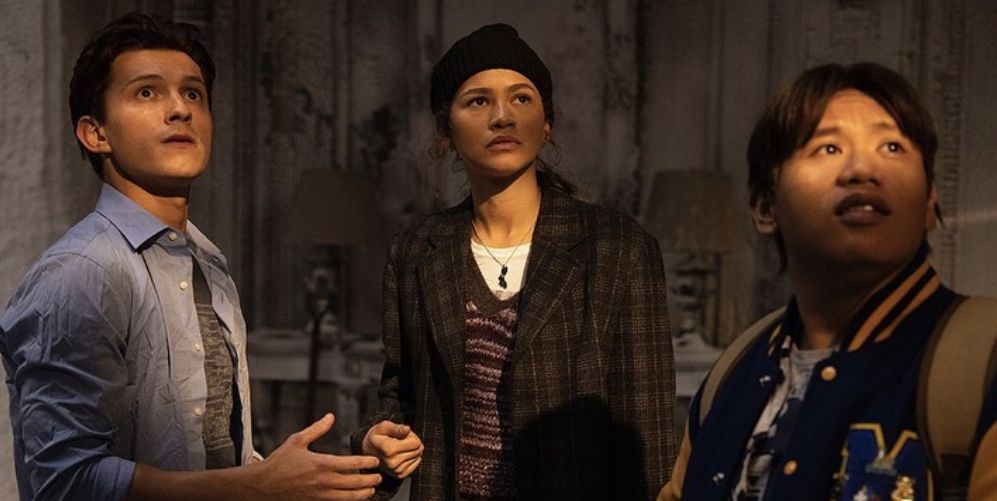
No Way Home satisfies on almost every level. Yes, Tobey Macguire and Andrew Garfield make their long-predicted and hugely anticipated return to the role of Peter Parker they had previously essayed in their own respective franchises. Yes, the film kills off a significant character and does so in a way that echoes the previous Spidey-franchise refrain “with great power comes great responsibility”. Yes, No Way Home brings a sense of closure to the fanboy toxicity circling Macguire’s tenure and Garfield’s tenure as the titular wallcrawler, and pays off various unfinished character arcs in a manner befitting the most convoluted and potentially confusing superhero franchise in modern film history. Yes, the film spectacularly (heh) delivers on the vast ensemble at its disposal bringing specific growth, action and individualism to the recurring characters within, especially the returning villains, but not to the detriment of the Tom Holland-era cast. It’s a brave gamble by director Jon Watts, as superhero films with more than two villains generally fail in exasperating fashion (remember Batman & Robin?), and the gamble pays off in spades; part of me thinks this has a lot to do with audience goodwill for the respective performers than it does anything original with the screenplay, but No Way Home is a rare success in the “vast ensemble superhero film” sub-sub-subgenre and a genuinely terrific movie overall.
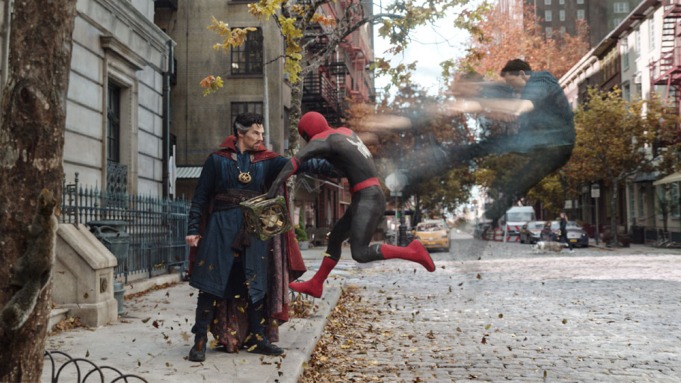
Returning actors aside – don’t worry, we’ll get to them – the film is first and foremost Tom Holland’s to carry. He carries it exceptionally well, delivering arguably his most emotive, cathartic and devastating performance in the role of Peter Parker to-date. The journey Holland has had with the role has endeared him to audiences since he first snapped Cap’s shield back in Civil War, and No Way Home undeniably takes the character to a far darker and more emotionally honest place than Peter ever had with Tony Stark. No Way Home thankfully closes the book on the influence of the now dead gajillionare (there’s an early scene where the computerised Spider-Suit given to Peter a few films back doesn’t work because it can’t access the Stark Network – for obvious reasons) and I guess now we can look forward to a more comic-book-accurate Spider-Man suit from hereon out. Holland plays the full gamut of sincerity, rage, comedy and teenage innocence as he traverses the galaxy-shattering repercussions of his inadvertent injection of error with Strange’s initial forget-me-not incantation; I would argue that the banter between Holland’s Peter and Benedict Cumberbatch’s Doctor Strange is some of the film’s best, with the former Sherlock actor stepping nicely into the father-figure role vacated by Robert Downey Jr, albeit with a lot more gruff condescension, and Cumberbatch seems to have the ability to give a subtle wink to the audience every time he opens his damn mouth, he’s having such fun.
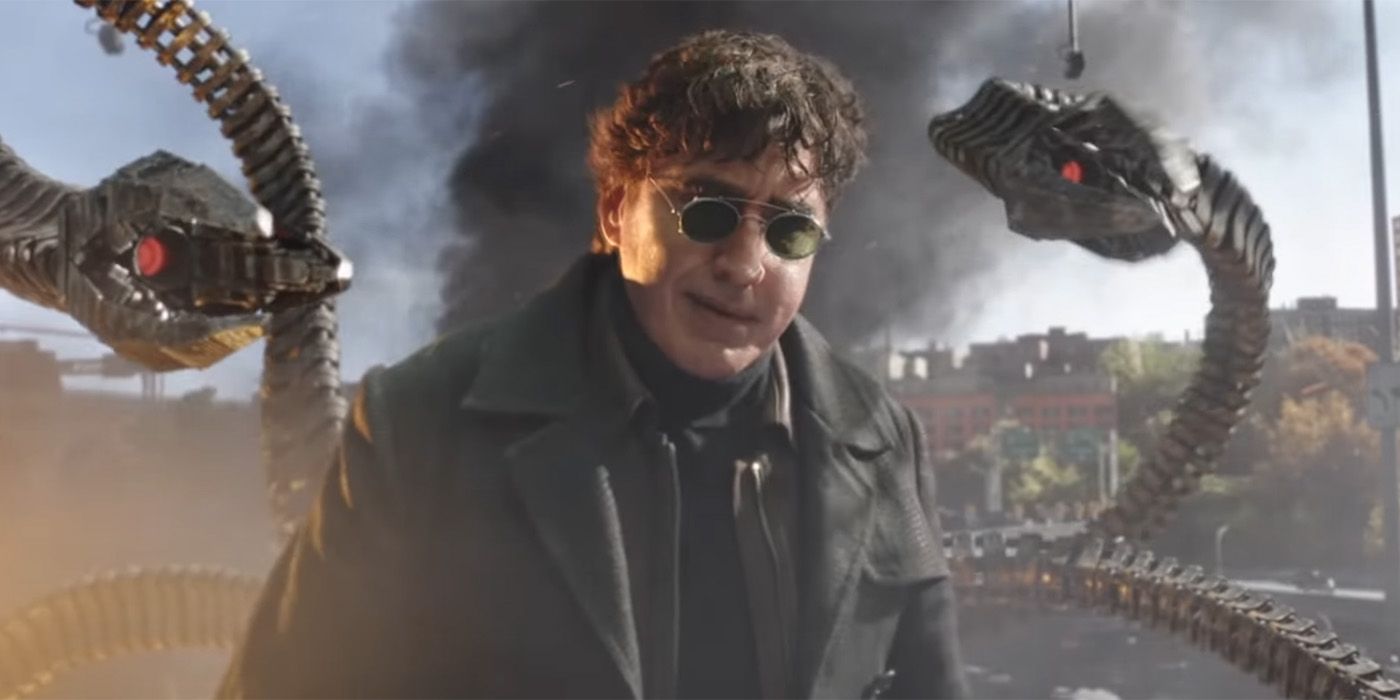
Regular ancillary characters MJ and Ned have a lot less to do character-wise than in previous instalments but Jon Watts salvages this issue by giving them a lot more action to contend with, inciting plot twists instead of simply being there to react to them. Zendaya and Jacob Batalan are like a pair of comfy slippers here, their characters as flavoured and nuanced as they have been since they debuted properly in Spider-Man: Homecoming, and watching them work alongside Holland is a thing of pure joy. The film’s somewhat tragic resolution comes with a very, very moving denouement between this iconic trio and the film’s payoff may very well bring some to tears. That these young actors can deliver both the giggles and the tears in equal measure in a bang-bang comic book movie is testament to the chemistry they have together, and deliberately overwrought writing in the screenplay. Marisa Tomei again plays the strong-willed Aunt May with panache, Jon Favreau continues to look tired as hell playing Happy Hogan – weird how a character played as a cheap gag in the first Iron Man has morphed into an ancillary Nick Fury-esque role in the Spider-Man movies – and JK Simmons reprises his role as J Jonah Jameson, although instead of the rapacious newspaper editor of the Raimi films, here he’s played as an InfoWars-style conspiracy theorist and right-wing purveyor of fake news. That JK Simmons does a better take on Alex Jones than Alex Jones does himself says something about Simmons as an actor.
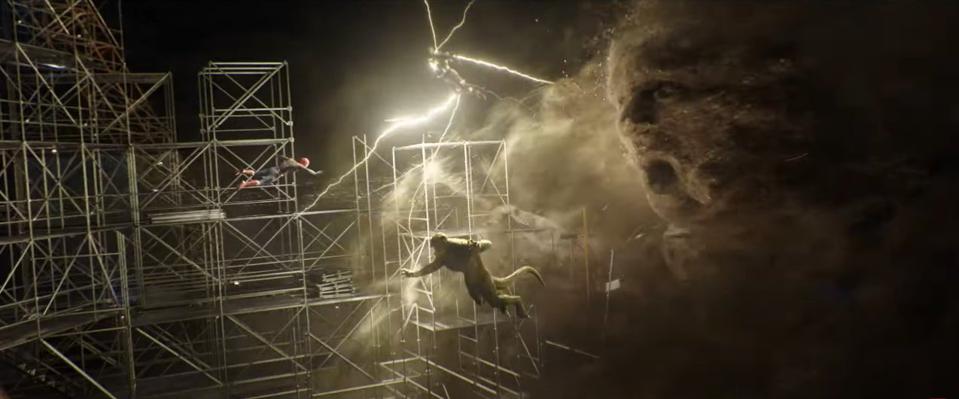
By far the most successful aspect of No Way Home, however, was the reintroduction of, narrative honesty with, and payoff for, returning Spider-Man alumni, and in this film there are heaps. Sam Raimi trilogy villains Willem Dafoe, Alfred Molina, Thomas Hayden-Church all reappear as their respective villains Green Goblin, Doctor Octopus and Sandman, whilst the Marc Webb duology villains Jamie Foxx and Rhys Ifans tread the screen again as Electro and Lizard, and what they are afforded in this film magnificently honours their past appearances and in almost every respect neatly wraps up loose character threads fans have discussed for the last two decades or more. Each is given honest emotional investment by the script and the actors – to be honest, I half expected the reprise by Molina, Foxx and Dafoe to be mere cameos at best but in No Way Home they’re actually integral to, and manifested from, the plot. The dynamic between Molina’s Octavius and Dafoe’s Norman Osborn is the film’s strongest, probably because audiences have had more time with them on-screen, but make no mistake, Jamie Foxx and to a lesser degree Ifans’ Lizard have their moment to shine as well.
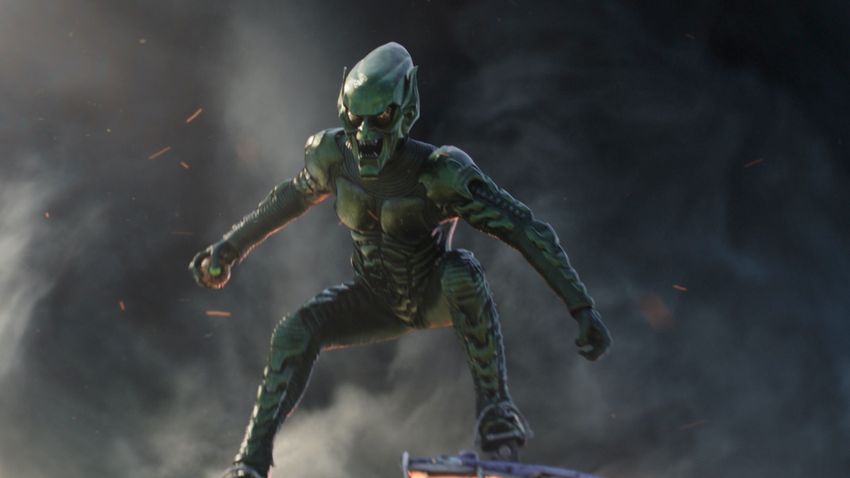
Of course, no review of No Way Home would be complete without a complete dissection of the “surprise” appearances of Tobey Macguire and Andrew Garfield as their versions of Peter Parker. Yes, they’re in it. And it’s not a throwaway gimmick, not a brief cameo, not a vague lip-service in-the-background-on-a-screen minor appearance: Macguire and Garfield have full-fledged roles to play, similarly to their franchise villains. The way the film brings them into the story works due to the hugely incomprehensible plot being what it is, and it’s as if neither have ever been away, particularly Garfield, whose leftover character beats – the grief over losing Emma Stone’s Gwen Stacy in The Amazing Spider-Man 2 – are handled with delicacy and emotional truth that fans will be very well satisfied in the manner it’s all resolved. Having Garfield’s Peter catch a falling MJ and save her, and then burst into tears when he realises he has broken through the anguish of his failure with Gwen, very nearly choked me up. Macguire’s relationship with Dafoe and Molina’s characters is exploited to terrific effect, a knowing patter between them all, and when Tobey recounts the pain of trying to find the man who killed his Uncle Ben, I again nearly choked up. Lord, the film plays well with past franchise iconography without being explicit, and an early-third-act scene in which they all sit around waiting for the villains to arrive, having a chat comparing their abilities and the differences between them, is among the best things the MCU has ever done. Ever. Kudos to Watts, the screenwriters, and producers Kevin Feige and Amy Pascal for achieving the rarest of rare feats in modern blockbusters: paying off earlier films while continuing to pave the way forward.
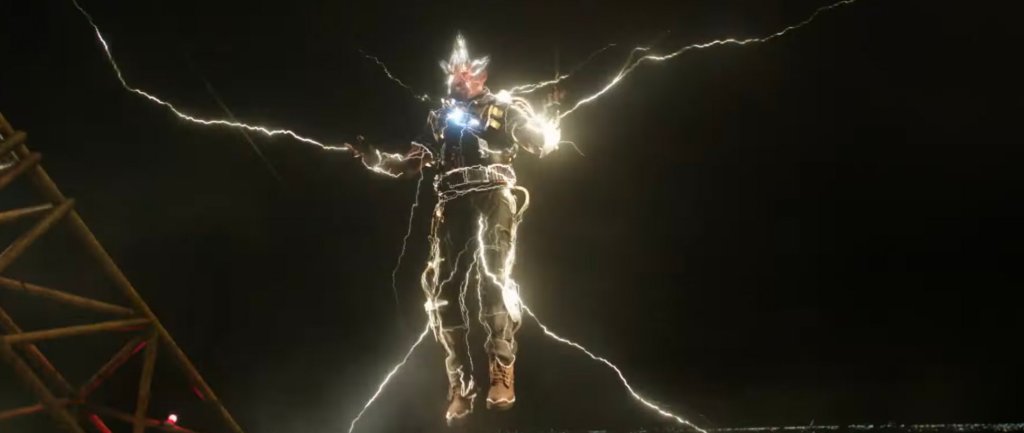
The screenplay is credited again to Chris McKenna and Erik Sommers, who both wrote the previous two MCU Spider-Man films, and once more they have delivered a film that nails the feeling of a Spider-Man movie in live-action. One of the fun things about the Spider-Man comics has long been the dichotomy of a school-aged kid trying to navigate life and superherodom, and No Way Home projects that chaotic frenzy and youthful exuberance with pitch-perfect sincerity. Life ain’t always a box of chocolates, to badly misquote Forest Gump, and the darker moments of No Way Home, the tumultuous angst and grief of loss (yes, a major character faces the flatline and doesn’t come back) are given equal weight between the bombastic action sequences (of which there are numerous) and spectacular CG. The character beats between all three Spider-Men and their respective villains, as well as interactions with their opposing villains, all carry heft thanks to committed performances and delicate direction from Watts, who allows the film’s quieter moments to breathe enough to make the action seem all that much sweeter. A brief reprise of the famous city-bending chase in Doctor Strange occurs in No Way Home and if it did anything at all it surely energised me for the upcoming sequel In The Multiverse of Madness, and the film’s climactic Statue Of Liberty-set slugfest is both enjoyably loud and preposterous, as well as being inordinately intrinsic to the webslinging antics of both comic and film.
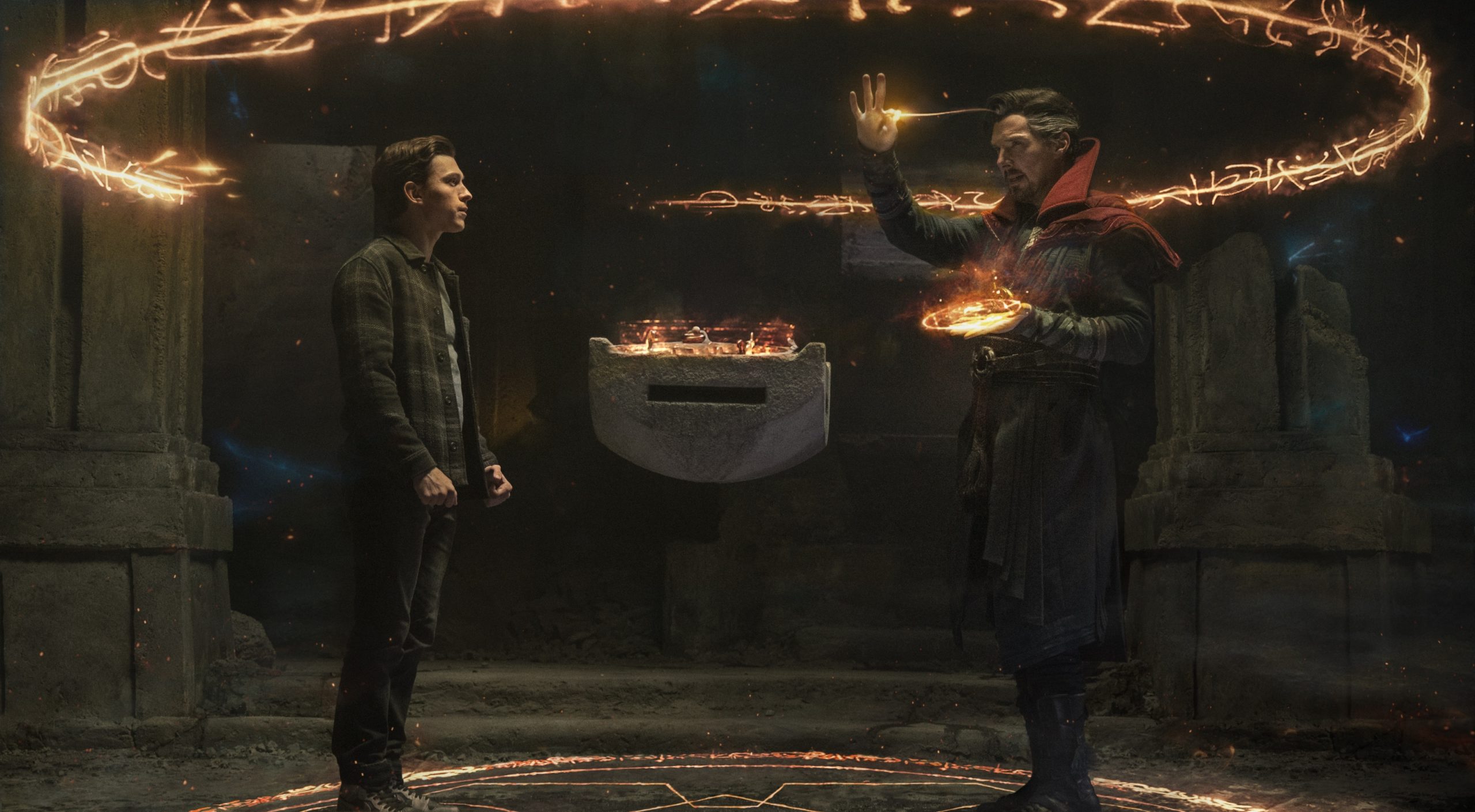
A minor caveat to my unwavering praise: the film’s mid-credit sequence was, to my mind, a terrific letdown. A brief Venom cameo, echoing the credit sting in Venom: Let There Be Carnage, is simply for fanservice and offers little by way of surprise (certainly not as baffling as the one in Shang-Chi, though). It should be noted that our screening had the debut of the new Doctor Strange sequel trailer, which explored greater ramifications of the events of No Way Home, which went a long way to make up for the ten minute credit roll, so there’s that.
No, No Way Home isn’t as good as Into The Spider-verse but then again what film could be? It has a lot of balls to juggle, a lot of meaty story and character arcs to execute, and a hell of a lot of fanboy expectation to deliver on, and that it achieves this with enthusiasm, respect to the previous Spider-Man franchises, and neatly bows-up both the Macguire and Garfield arcs so well, is an astounding feat. A film such as this ought to have collapsed under its own weight (and the weight of expectation) but Jon Watts, nails the delivery, nails the payoff, and absolutely sets Spider-Man up for success into the future, whether it stars Tom Holland or not.

